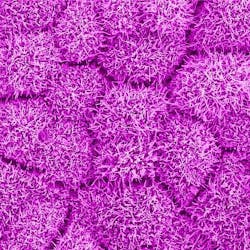AI makes retinal imaging 100 times faster, compared to manual method
Researchers at the National Institutes of Health applied artificial intelligence (AI) to a technique that produces high-resolution images of cells in the eye.
They report that with AI, imaging is 100 times faster and improves image contrast 3.5-fold. The advance, they say, will provide researchers with a better tool to evaluate age-related macular degeneration (AMD) and other retinal diseases.
Johnny Tam, Ph.D., is developing a technology called adaptive optics (AO) to improve imaging devices based on optical coherence tomography (OCT). Like ultrasound, OCT is noninvasive, quick, painless, and standard equipment in most eye clinics.
Tam’s latest work targets the retinal pigment epithelium (RPE), a layer of tissue behind the light-sensing retina that supports the metabolically active retinal neurons, including the photoreceptors. The retina lines the back of the eye and captures, processes, and converts the light that enters the front of the eye into signals that it then transmits through the optic nerve to the brain. Scientists are interested in the RPE because many diseases of the retina occur when the RPE breaks down.
Tam and his team developed a novel AI-based method called parallel discriminator generative adverbial network (P-GAN)—a deep learning algorithm. By feeding the P-GAN network nearly 6,000 manually analyzed AO-OCT-acquired images of human RPE, each paired with its corresponding speckled original, the team trained the network to identify and recover speckle-obscured cellular features.
When tested on new images, P-GAN successfully de-speckled the RPE images, recovering cellular details. With one image capture, it generated results comparable to the manual method, which required the acquisition and averaging of 120 images. With a variety of objective performance metrics that assess things like cell shape and structure, P-GAN outperformed other AI techniques.

